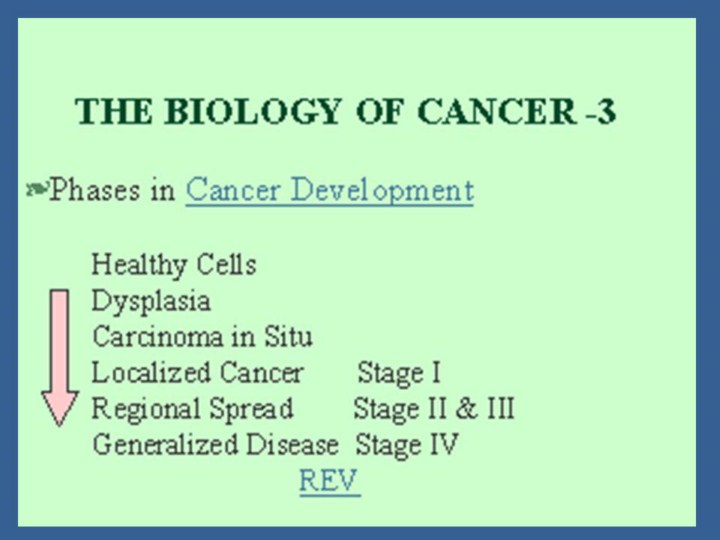Search inside of Supercourse and lectures in HTML and PPT format
 |
 |
front |1 |2 |3 |4 |5 |6 |7 |8 |9 |10 |11 |12 |13 |14 |15 |16 |17 |18 |19 |20 |21 |22 |23 |24 |25 |26 |27 |28 |29 |30 |31 |review |

Cancer
has a characteristic natural history. Healthy cells first become dysplastic
showing subtle morphological abnormalities under the microscope which
suggest the beginning of transformation. The next step is carcinoma in situ
where characteristic abnormalities of both form and proliferation are
present but without invasion of the underlying basement membrane that holds
them in place in the tissue of origin. This earliest phase is highly curable
and is detected with screening programs, such as the PAP smear for cervical
cancer. Localized cancer is stage I disease where the tumor exhibits
invasion and disruption of local tissues to form a primary lesion. Tumor
cells then invade local lymphatics and spread to the regional (stage II) or
extended regional (stage III) draining lymph nodes as secondary tumors.
Finally tumor cells invade into the blood stream where characteristic
patterns of blood-borne metastasis herald the onset of stage IV disease.
Particular tumors vary in the extent to which they follow these phases in
sequence: melanoma usually has a distinct loco-regional phase, while breast
cancer is systemic from the beginning. Staging correlates with survival and
provides an essential guide both to prognosis and to the design of treatment
plans. |
|